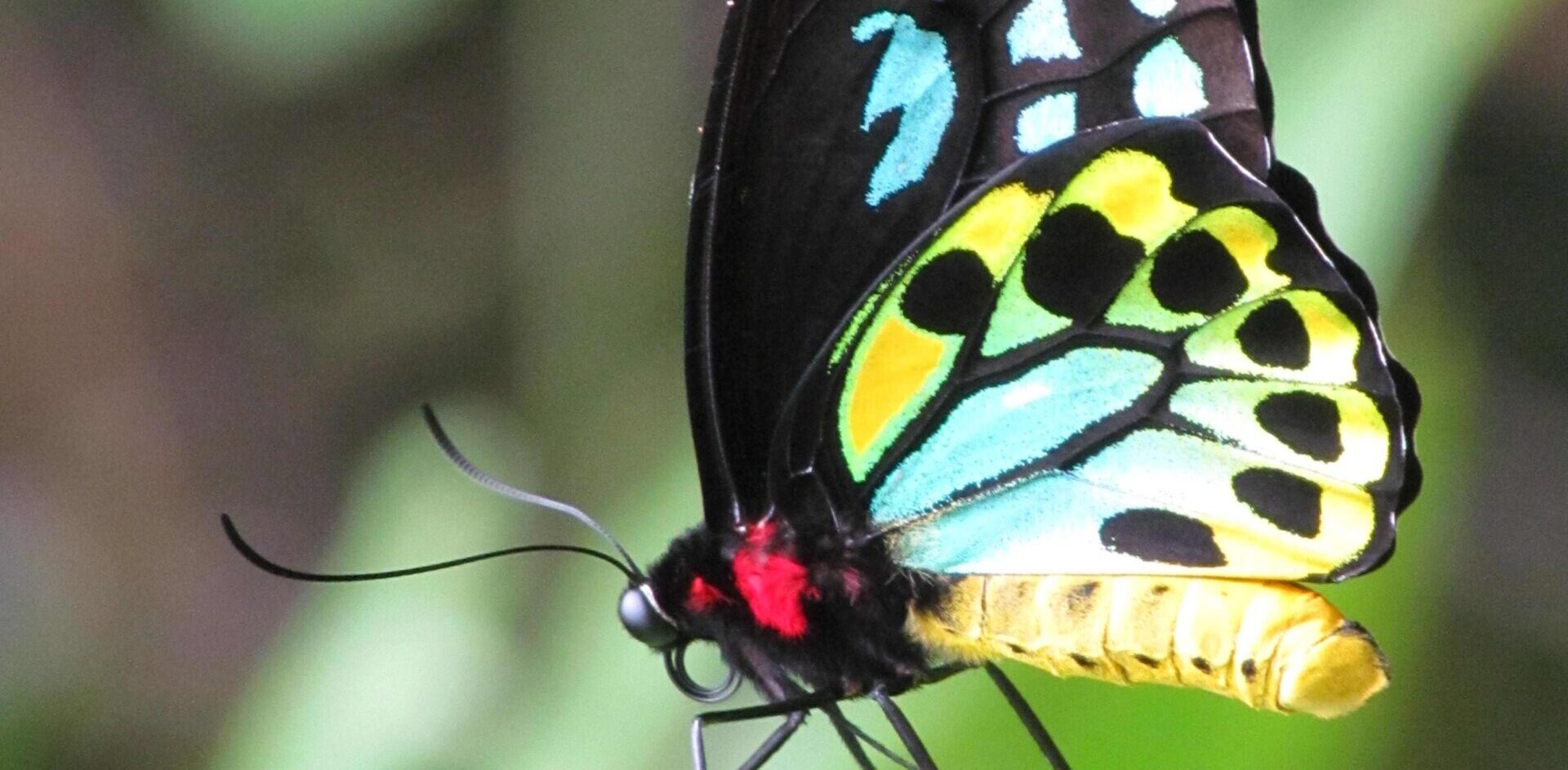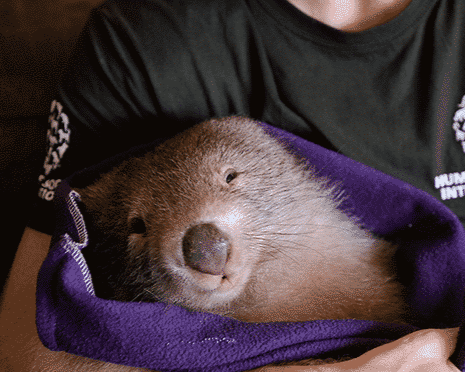The Newsletter of Humane World for Animals' Wildlife Land Trust • Issue 30 • 2025 Read More
After a year of global havoc and heartbreak caused by COVID-19, it is frustrating for the international community to still be debating bans on the type of wildlife markets the disease emerged from. While countries delay, we run the risk of a new dangerous disease developing.
Zoonoses, that is diseases transferred to humans from animals, account for 58% of known pathogens and 73% of all emerging infectious diseases affecting humans⊃1;. Clearly, how we interact with animals is critical to managing disease risks.
Wildlife markets, and the trade that supplies them, are such a high risk because they are where multiple animal species, travelled over long distances, are crowded together in cramped, stressful and unhygienic conditions. They create the ideal conditions for pathogens to emerge and be transmitted to crowds of humans. We’ve seen it happen twice in China, with the SARS outbreaks in 2002 and now COVID-19.
A ban on wildlife markets is the obvious course of action and credit to Australia for being one of the first governments to come out and call for it in early 2020 and to China for now at least putting a permanent ban on trade of most wildlife for food. However, wildlife markets are common and continuing in other countries, and with substantial dollars involved, bans have their detractors.
Why not just seek reform? Are bans the only option?
We wanted to answer some common questions we hear about wildlife market bans that will help to highlight why a ban is essential if we want to avoid the emergence of another dangerous pathogen.
Why can’t we just ban high risk species from markets?
While bats were the likely common denominator in COVID-19, SARS (Severe Acute Respiratory Syndrome) and MERS (Middle East Respiratory Syndrome), these new viruses were all thought to have been the result of a recombination event where coronaviruses hosted by two different species merged. It is very difficult to predict what the intermediate species in a recombination event will be—civets, camels, pangolins, racoon dogs, ferrets have all been in the frame. A recombination event could happen in transport or in warehouses and not just at the final marketplace. Remembering also that bird markets in Vietnam were implicated in avian flu.
Trying to draw up lists of high-risk species is fraught, and trading in all wild mammals and birds, which are the chief sources of coronaviruses and other pathogens transmissible to humans, should be considered high risk.
.png)
Why can’t we regulate a sustainable, hygienic wildlife trade?
Global wildlife trade is overwhelmingly unsustainable and the international community has been striving to achieve so called sustainable wildlife trade for decades. There has been an international treaty striving for it since the 1970s—the UN Convention on International Trade in Endangered Species (CITES). A global study⊃2; released in 2019 and authored by 145 scientists from 50 countries, found one million species to be at risk of extinction and listed the top four threats in order. They put ‘direct exploitation’ (aka wildlife trade) as the number two threat, only behind habitat loss and ahead of climate change, pollution and invasive species. A study examining global wildlife trade released this year by Morton et al (2021)⊃3; found that terrestrial species subject to wildlife trade declined on average by 62%.
Besides, China already tried to establish a well-regulated wildlife market and it failed. In 2006 China relocated one of the largest wildlife wholesale markets from Guangzhou to Taiping and invested RMB 30 million with the intention to permit selling of licensed wildlife with strict inspection and checks. Despite these intentions the market reportedly became a major center for illegal wildlife trade and subject to repeated raids and closures.⁴
Even if sustainable wildlife trade was a remotely realistic goal, putting in place the mechanisms to manage it would take years— and while the time is being taken to set things up for a sustainable, regulated and hygienic trade, the risks of a new disease emerging from the markets continues unchecked.
Finally, a permit makes no difference to a pathogen. It simply doesn’t care if its animal host is being traded legal or illegally.
But bans will drive wildlife trade underground!
Much of wildlife trade is already underground!
It is often quoted that the scale of illegal wildlife trade rivals drug, arms and human trafficking and often involves the same criminal networks. Furthermore, legal trade often acts as a shield for illegal trade, as legal trade stimulates demand for the product and a mix of legal and illegal trade confuses the market which is exploited by traffickers.
When trade in wild mammals and birds is banned comprehensively, it is clear that all the product on sale is illegal. No excuses, and no loopholes.
But wildlife is important for food security!
Wildlife markets of the type involved in the spread of SARS and COVID-19 cater to a relatively affluent urban clientele that sees the use of wild animals for food and medicine as part of a fashionable lifestyle.
A 2008 survey of wildlife consumers in China found taste, rarity/novelty and curiosity were greater motivations for purchases, before nutrition and nourishment⁵. Wildlife products are also expensive. Another 2008 study noted that wildlife meat was selling for US$30 per kg compared to US$1 per kg for chicken. These are luxury items and not important for food security.
While local markets in Africa with more localised trade in bush meat may have more claim to food security issues and require a different approach, bans on wildlife markets in Asia and elsewhere that are supplied by long distance and international trade are not jeopardising food security.
What about all the livelihoods dependent on wildlife trade?
While 150 million rural households are considered dependent on local scale wildlife trade⁶, only a relatively small number of people are involved in international trade in wild animals for pets, medicine and luxury meats⁷, and it is often considered criminal activity.
Where legitimate livelihoods are impacted, we would always recommend that prohibitions on wildlife markets are accompanied by strategies to redeploy people into alternative livelihoods. HSI has successfully used this strategy in South Korea with traders willing to exit the dog meat trade, providing small grants to enable them to train and set themselves up with other businesses. It works well and 18 dog meat farms have been closed using this model.
Of course, by far the greatest risk to livelihoods around the world is another pandemic, which would also disproportionately impact poor rural communities.
Shouldn’t we put bans in place while reforms take place?
Yes! Everyone agrees wildlife markets are high risk for the emergence of zoonotic pandemics. The debate is over whether to prohibit them or to try to better regulate them and while the debate continues the risk of another disease emerging remains wide open. If governments want to reform wildlife trade instead of banning it, how will they manage the risk in the meantime? Even if you still believe wildlife trade can be managed responsibly, and are willing to ignore all the animal suffering involved, surely you need bans on wildlife markets in place to manage the disease risk while you go about your reforms?
For more on this topic, you can download and read our expert reports:
Fur Farming, COVID-19 and Zoonotic Disease Risks
An HSI report: The connection between animal agriculture, viral zoonoses, and global pandemics
This blog also draws on a presentation HSI Australia’s Head of Campaigns, Nicola Beynon, delivered on World Wildlife Day on 3 March 2021 at a forum organized by Australia’s Chief Veterinary Officer, Dr Mark Schipp, addressing the question Wildlife Markets: To Ban or To Reform?
1 Karesh WB, Cook RA, Bennett EL, Newcomb J. Wildlife trade and global disease emergence. Emerg Infect Dis. 2005;11(7):1000-1002. doi:10.3201/eid1107.050194
2 (2019): Global assessment report on biodiversity and ecosystem services of the Intergovernmental Science-Policy Platform on Biodiversity and Ecosystem Services. E. S. Brondizio, J. Settele, S. Díaz, and H. T. Ngo (editors). IPBES secretariat, Bonn, Germany.
3 Morton O, Scheffers B.R, Haugassen T, Edwards D.P (2021) Impacts of Wildlife Trade on Terrestrial Biodiversity Nature Ecology & Evolution
4 Chmura AA, op. cit. and references cited therein
5 Zhang L, Hua N, Sun S. Wildlife trade, consumption and conservation awareness in southwest China. Biodivers Conserv. 2008;17(6):1493-1516. doi:10.1007/s10531-008-9358-8
6 Nielsen M.R.,Melby H., Smith-Hall, C., Pouliot & Treue T The importance of wildlife meat trade in the global south Ecol. Econ 146, 696-705 (2018) The importance of wildlife meat trade in the global south
7 Morton O, Scheffers B.R, Haugassen T, Edwards D.P (2021) Impacts of Wildlife Trade on Terrestrial Biodiversity Nature Ecology & Evolution


